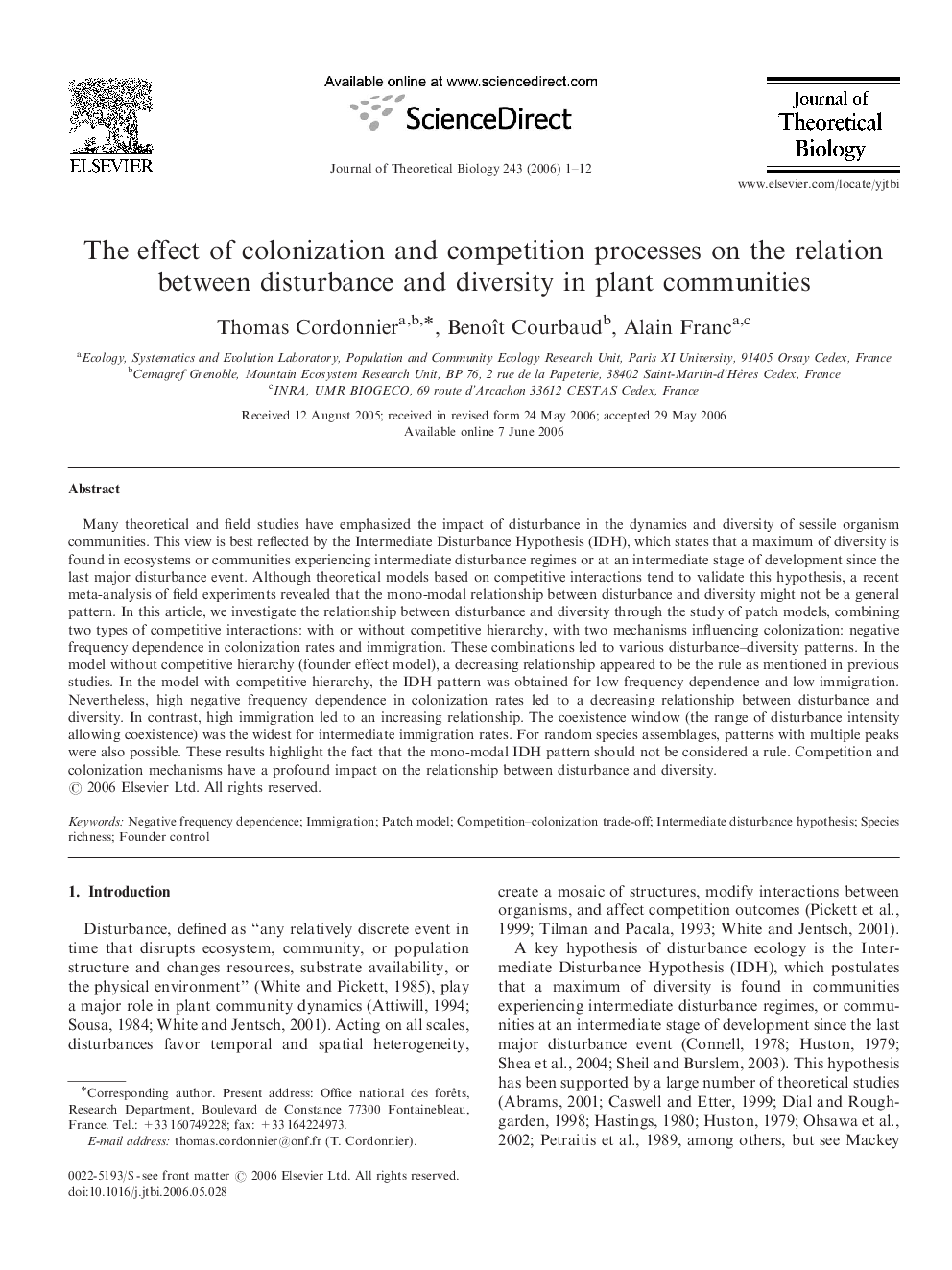| Article ID | Journal | Published Year | Pages | File Type |
|---|---|---|---|---|
| 4499349 | Journal of Theoretical Biology | 2006 | 12 Pages |
Abstract
Many theoretical and field studies have emphasized the impact of disturbance in the dynamics and diversity of sessile organism communities. This view is best reflected by the Intermediate Disturbance Hypothesis (IDH), which states that a maximum of diversity is found in ecosystems or communities experiencing intermediate disturbance regimes or at an intermediate stage of development since the last major disturbance event. Although theoretical models based on competitive interactions tend to validate this hypothesis, a recent meta-analysis of field experiments revealed that the mono-modal relationship between disturbance and diversity might not be a general pattern. In this article, we investigate the relationship between disturbance and diversity through the study of patch models, combining two types of competitive interactions: with or without competitive hierarchy, with two mechanisms influencing colonization: negative frequency dependence in colonization rates and immigration. These combinations led to various disturbance-diversity patterns. In the model without competitive hierarchy (founder effect model), a decreasing relationship appeared to be the rule as mentioned in previous studies. In the model with competitive hierarchy, the IDH pattern was obtained for low frequency dependence and low immigration. Nevertheless, high negative frequency dependence in colonization rates led to a decreasing relationship between disturbance and diversity. In contrast, high immigration led to an increasing relationship. The coexistence window (the range of disturbance intensity allowing coexistence) was the widest for intermediate immigration rates. For random species assemblages, patterns with multiple peaks were also possible. These results highlight the fact that the mono-modal IDH pattern should not be considered a rule. Competition and colonization mechanisms have a profound impact on the relationship between disturbance and diversity.
Related Topics
Life Sciences
Agricultural and Biological Sciences
Agricultural and Biological Sciences (General)
Authors
Thomas Cordonnier, Benoît Courbaud, Alain Franc,
